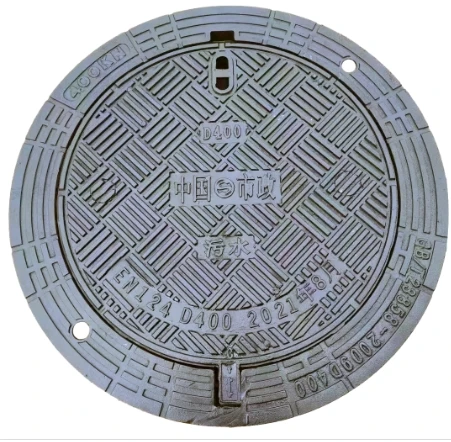- Afrikaans
- Albanian
- Amharic
- Arabic
- Armenian
- Azerbaijani
- Basque
- Belarusian
- Bengali
- Bosnian
- Bulgarian
- Catalan
- Cebuano
- China
- China (Taiwan)
- Corsican
- Croatian
- Czech
- Danish
- Dutch
- English
- Esperanto
- Estonian
- Finnish
- French
- Frisian
- Galician
- Georgian
- German
- Greek
- Gujarati
- Haitian Creole
- hausa
- hawaiian
- Hebrew
- Hindi
- Miao
- Hungarian
- Icelandic
- igbo
- Indonesian
- irish
- Italian
- Japanese
- Javanese
- Kannada
- kazakh
- Khmer
- Rwandese
- Korean
- Kurdish
- Kyrgyz
- Lao
- Latin
- Latvian
- Lithuanian
- Luxembourgish
- Macedonian
- Malgashi
- Malay
- Malayalam
- Maltese
- Maori
- Marathi
- Mongolian
- Myanmar
- Nepali
- Norwegian
- Norwegian
- Occitan
- Pashto
- Persian
- Polish
- Portuguese
- Punjabi
- Romanian
- Russian
- Samoan
- Scottish Gaelic
- Serbian
- Sesotho
- Shona
- Sindhi
- Sinhala
- Slovak
- Slovenian
- Somali
- Spanish
- Sundanese
- Swahili
- Swedish
- Tagalog
- Tajik
- Tamil
- Tatar
- Telugu
- Thai
- Turkish
- Turkmen
- Ukrainian
- Urdu
- Uighur
- Uzbek
- Vietnamese
- Welsh
- Bantu
- Yiddish
- Yoruba
- Zulu
Nov . 14, 2024 22:47 Back to list
sodium slicate sand casting
Sodium Silicate Sand Casting A Revolution in Foundry Practices
Sodium silicate sand casting is an innovative and evolving process utilized in the foundry industry for the production of intricate metal parts. This method has gained significant popularity due to its environmental benefits and the superior qualities of castings produced. In this article, we delve into the principles, advantages, applications, and future prospects of sodium silicate sand casting.
What is Sodium Silicate Sand Casting?
Sodium silicate sand casting, often referred to as water glass sand casting, employs a mixture of sand, sodium silicate (a liquid glass compound), and water as a binder. Unlike traditional sand casting methods that utilize organic binders, sodium silicate provides high-temperature stability and excellent dimensional accuracy. The mixture is shaped around a pattern, and the sodium silicate acts as an adhesive, allowing the sand to retain its form during the pouring of molten metal.
Upon completion of the molding process, the sand mold is hardened through the application of carbon dioxide, which reacts with the sodium silicate, effectively solidifying the mold. This hardening process results in a casting mold that is not only robust but also capable of producing detailed and complex geometries.
Advantages of Sodium Silicate Sand Casting
The adoption of sodium silicate sand casting presents numerous advantages over traditional methods, making it an attractive option for manufacturers
1. Environmental Considerations One of the standout benefits of sodium silicate sand casting is its environmentally friendly profile. The process generates minimal emissions and utilizes materials that are less harmful compared to organic binders. This aligns with the industry’s growing focus on sustainable practices.
2. Enhanced Quality Castings produced through sodium silicate sand casting exhibit superior surface finish and dimensional fidelity. The quick hardening process minimizes shrinkage and distortion, allowing for tighter tolerances in manufacturing.
sodium slicate sand casting

3. Cost-Effectiveness Sodium silicate is readily available and inexpensive, leading to lower material costs for foundries. Additionally, the reuse of sand in the casting process further drives down expenses, contributing to a more economical operation.
4. Versatile Applications The versatility of this casting method allows for a wide range of applications, from automotive components to intricate machinery parts in various industries, such as aerospace and marine engineering.
Applications in the Industry
Sodium silicate sand casting is notably advantageous in sectors where precision and durability are paramount. The automotive industry, for instance, leverages this technique for producing engine components, transmission housings, and pump casings. The aerospace sector benefits from the process in creating lightweight yet strong parts that can withstand extreme operational conditions. Marine applications also utilize sodium silicate castings for components exposed to harsh environments, ensuring longevity and reliability.
Future Prospects
Looking ahead, the future of sodium silicate sand casting appears promising. Continuous advancements in material science and casting technology are likely to introduce even more refined methods, enhancing the performance and efficiency of this process. Additionally, as the industry increasingly prioritizes sustainability, the adoption of sodium silicate sand casting may become more widespread, paving the way for novel applications in diverse sectors.
Incorporating advanced digital technologies, such as 3D printing and computer-aided design (CAD) software, can also streamline the prototyping and production phases, further bolstering the capabilities of sodium silicate sand casting.
Conclusion
Sodium silicate sand casting has revolutionized foundry practices, offering a unique blend of environmental consciousness, economic viability, and production quality. Its adaptability across various industrial sectors only enhances its significance in the realm of manufacturing. As technologies evolve and industries transform, sodium silicate sand casting is poised to play a crucial role in shaping the future of metal casting, continually meeting the demands of an ever-changing market landscape.
-
Premium Cast Iron Water Main Pipe: Durable, Corrosion-Resistant
NewsAug.03,2025
-
Durable Cast Iron Water Mains | AI-Optimized Systems
NewsAug.02,2025
-
High-Efficiency Propane Boiler for Baseboard Heat | Save Energy
NewsAug.01,2025
-
Premium Source Suppliers for Various Gray Iron Castings
NewsJul.31,2025
-
Durable Cast Iron Water Main Pipes | Long-Lasting
NewsJul.31,2025
-
High-Quality Cast Iron Water Main Pipe for Durable Infrastructure
NewsJul.30,2025


